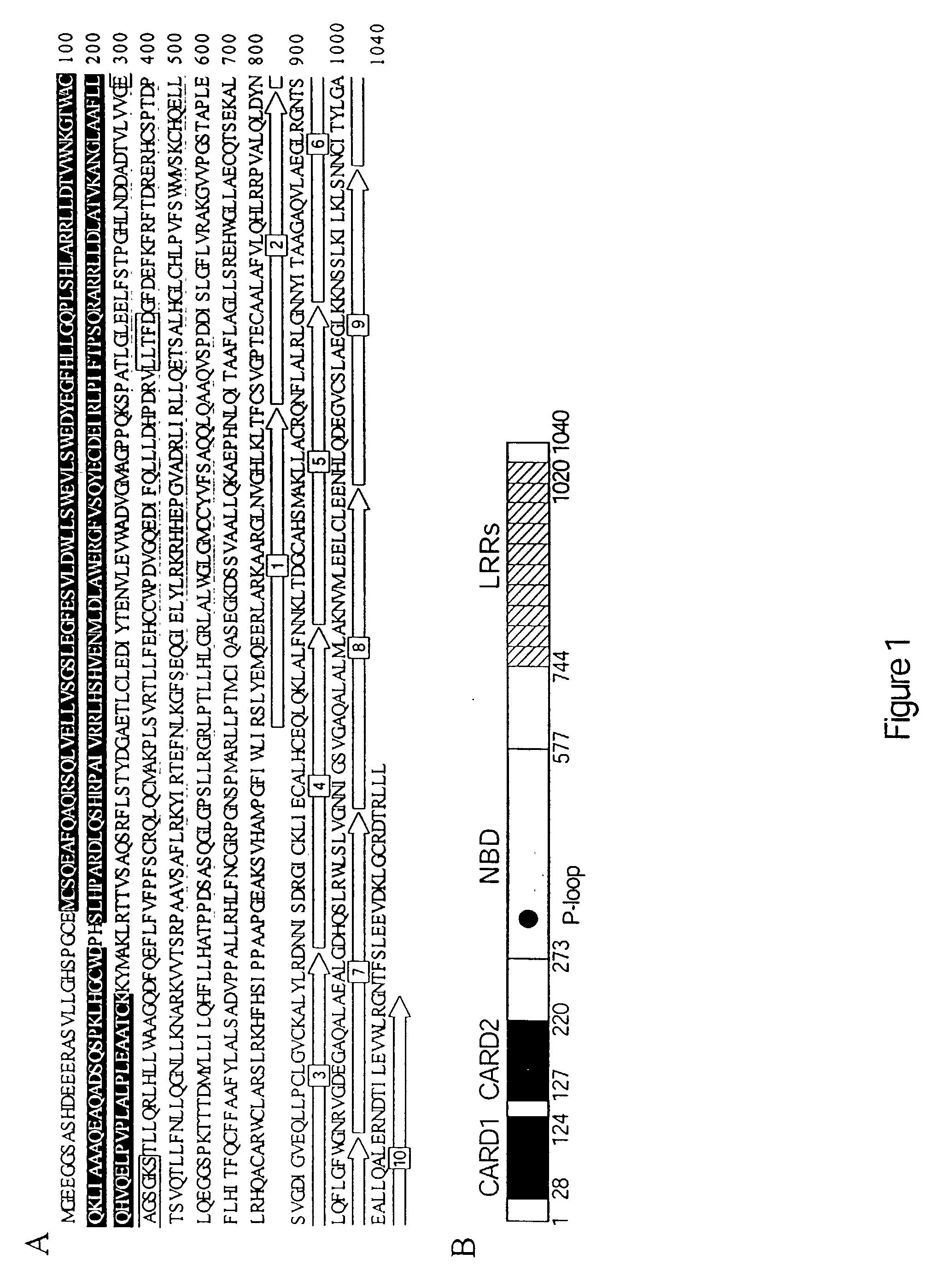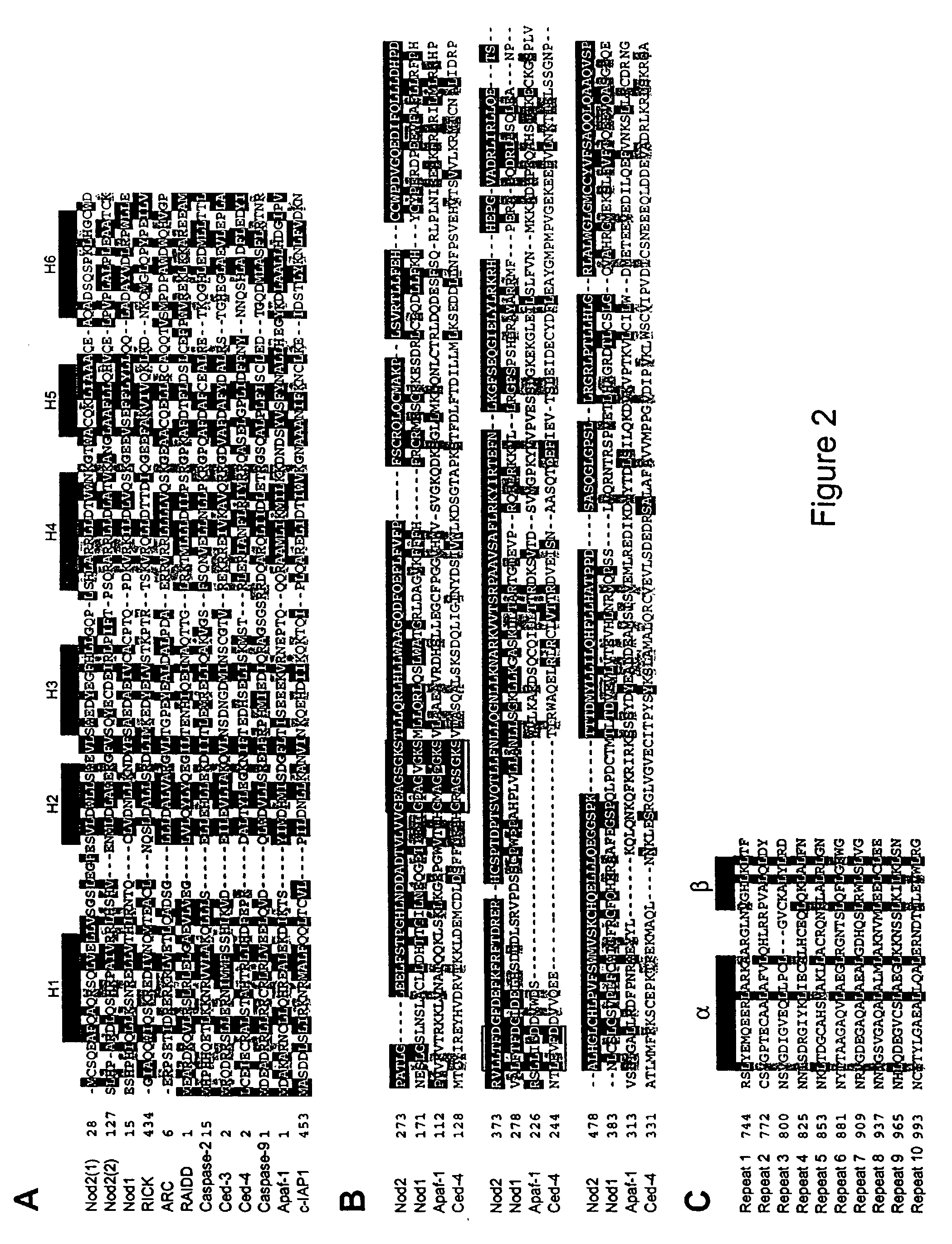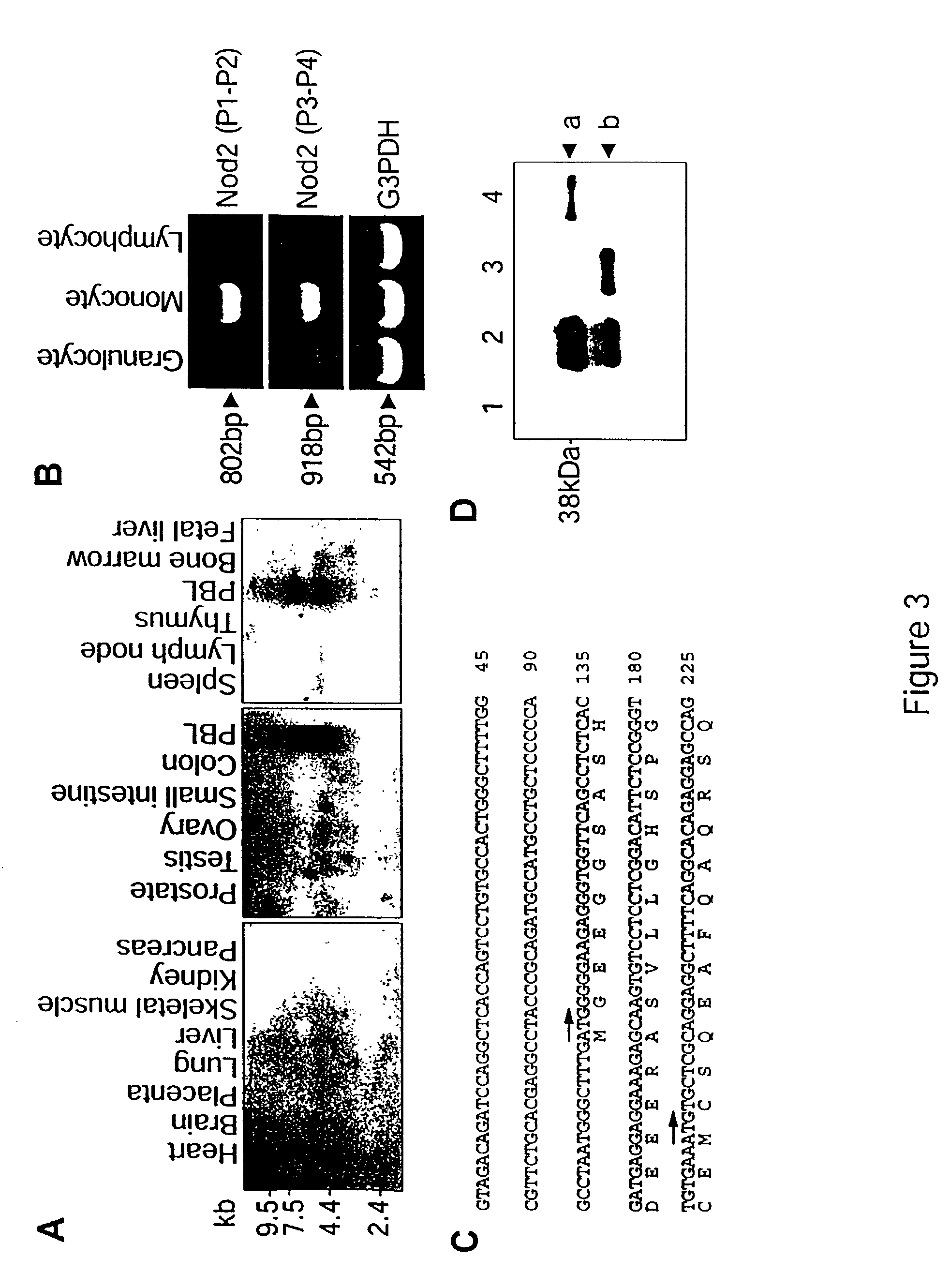Modulators on Nod2 signaling
a technology of nod2 signaling and modulators, which is applied in the direction of peptide/protein ingredients, instruments, peptide sources, etc., can solve the problems of ibd without known cure, afflict 2 million people, and current methods of managing ibd symptoms cost an estimated $1.2 billion annually in the united states
- Summary
- Abstract
- Description
- Claims
- Application Information
AI Technical Summary
Benefits of technology
Problems solved by technology
Method used
Image
Examples
example 1
[0374] This Example describes the identification of Nod2. To identify novel Nod1 / Apaf-I-like molecules, public genomic data bases were searched for genes encoding proteins with homology to Nod1 (Inohara et al., supra). A genomic sequence was identified in human chromosome 16 (GeneBank accession number AC007728) that encodes a peptide with significant homology to the NBD of Nod1. Analysis with GeneFinder of the genomic region predicted a gene encoding a novel protein with significant homology to Nod1. To determine the ends of the coding region, 5' RACE was performed using an oligonucleotide complementary to sequences encoding the N-terminus of the predicted protein and sequenced several EST cDNAs which contain partial sequences of the gene (GeneBank accession numbers AA775466, AA910520, A1090427). To amplify the cDNA containing the entire open reading frame, we RT-PCR was performed with three sets of primers corresponding to overlapping sequences of the coding region of the gene. The...
example 2
[0375] This Example describes the chromosomal localization and genomic organization of the human Nod2 gene. Two human BAC clones, RPII-327F22 and RPII-40IP9, containing the genomic sequence of human Nod2 (GenBank accession numbers AC007728 and AC007608, respectively) were identified. These BAC clones mapped to chromosome 16 at q12. Comparison of Nod2 cDNA and genomic sequences revealed that the Nod2 gene contains twelve coding exons.
example 3
[0376] This Example demonstrates that the expression of Nod2 is most abundant in monocytes. Northern blot analysis showed Nod2 to be expressed as two 7.0 and 5.5 kb transcripts in peripheral blood leukocytes with little or no detectable expression in various human tissues (FIG. 3A). This highly restricted pattern of expression is in contrast to that of Nod1 and Apaf-1 which are expressed in virtually all adult tissues although at different levels (Inohara et al., supra). To determine the cells that express Nod2, peripheral blood leukocytes were fractionated into granulocyte, lymphocyte and monocyte populations and analyzed by RT-PCR analysis with two different sets of oligonucleotide primers complementary to Nod2 coding sequences. The analysis showed that Nod2 was expressed primarily in monocytes (FIG. 3B). Because the Nod2 sequence contained two potential in-frame translation initiation sites separated by 81 nucleotides (FIG. 3C), their usage was determined by transfection of a Nod...
PUM
| Property | Measurement | Unit |
|---|---|---|
| temperatures | aaaaa | aaaaa |
| diameter | aaaaa | aaaaa |
| electrophoretic mobility shift assay | aaaaa | aaaaa |
Abstract
Description
Claims
Application Information
 Login to View More
Login to View More - R&D
- Intellectual Property
- Life Sciences
- Materials
- Tech Scout
- Unparalleled Data Quality
- Higher Quality Content
- 60% Fewer Hallucinations
Browse by: Latest US Patents, China's latest patents, Technical Efficacy Thesaurus, Application Domain, Technology Topic, Popular Technical Reports.
© 2025 PatSnap. All rights reserved.Legal|Privacy policy|Modern Slavery Act Transparency Statement|Sitemap|About US| Contact US: help@patsnap.com



